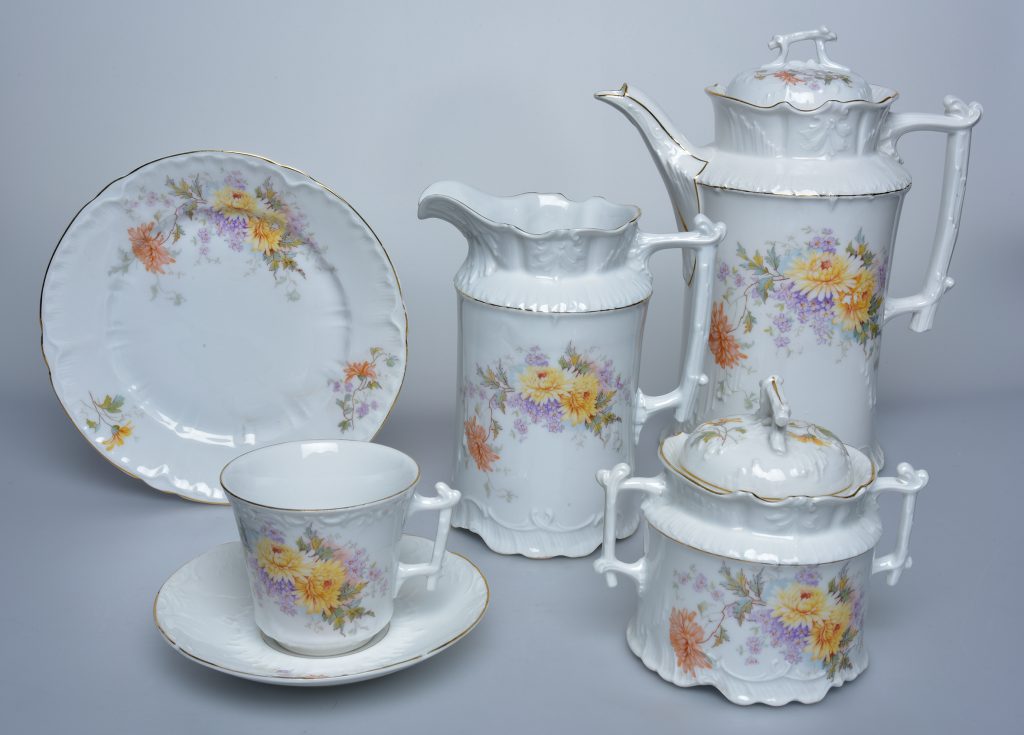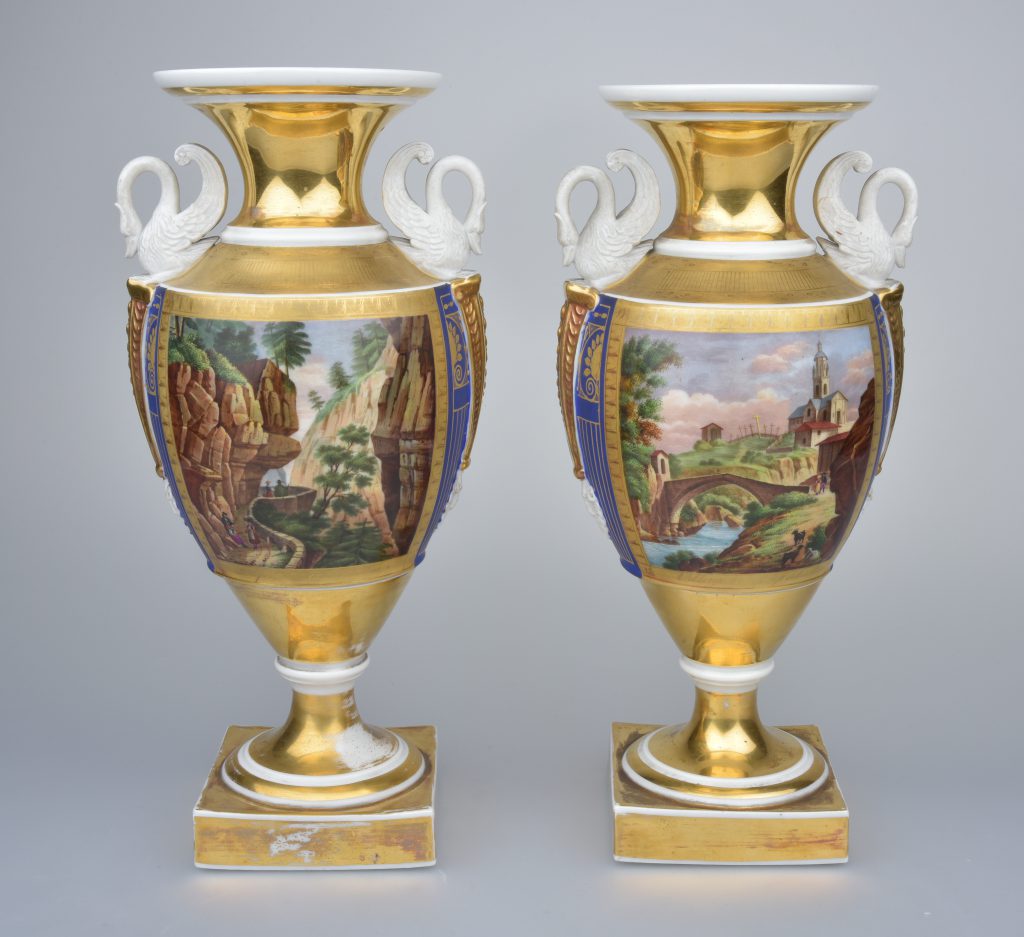

Porcelain can be divided into three main groups with different chemical and mineral compositions: hard-paste porcelain, soft-paste porcelain and bone china.
As distinct from stoneware, refined white earthenware, earthenware and faience, all three types of porcelain are slightly translucent and tend to be sufficiently hard-fired to fuse into a kind of natural glass.
Hard-paste porcelain
Ceramic material made from an artificial mixture, fully vitrified and glasslike, generally white and usually translucent. In hard-paste porcelain, the body consists of kaolin (a special type of white clay also known as china clay), feldspar (a ceramic flux) and quartz (facilitates vitrification of the body). Hard-paste porcelain is first fired to a biscuit at a temperature of 800ºC to 1000ºC (biscuit). The object is then covered in a glaze that also contains feldspar, which is fused onto the body in a second, glost firing at 1350ºC to 1450ºC. Decorations can be applied to the biscuit surface in underglaze painting (usually in cobalt blue) which is then fired with the glaze. Overglaze decorations, on the other hand, are painted onto the glaze and require a third firing at lower temperatures between 800ºC and 900ºC. The gilding of porcelain requires a fourth firing at 700ºC to 800ºC. The glaze on hard-paste porcelain cannot be scratched with a knife. While European hard-paste porcelain is generally white, Asian or Chinese porcelain usually has a slightly blue tinge.
French: porcelaine dure
German: Hartporzellan
Soft-paste porcelain (frit porcelain)
Ceramic material made from an artificial mixture, fully vitrified and glasslike, generally white and slightly translucent. The clay body used to make soft-paste porcelain is a combination of a calcareous white clay with added lime and glass frit or ground glass. After biscuit firing at 1100ºC to 1200ºC, the object is covered in a lead glaze, which is fuzed during the second firing at 1000ºC. The same decorations can be applied, except that they are smoother and shinier than the overglaze decorations on hard-paste porcelain. The colours mix very well with the lead glaze and do not stand out from it visually. The glaze on soft-paste porcelain can be scratched with a knife, as it is considerably softer than the feldspar glaze on hard-paste porcelain.
French: porcelaine tendre
German: Weichporzellan
Bone china
First developed in England in the 18th century from soft-paste porcelain, bone china (from the 1790s) is a slightly translucent pottery consisting of 50% bone ash, 25% kaolin and 25% “china stone” (a fine-grained, feldspar-rich, kaolinised granite characterised by the absence of iron-bearing minerals). Bone china is fully vitrified. It is known for its mechanical and physical hardness, its chip resistance and its bright white body.
French: porcelaine à base d’os (bone china)
German: Knochenporzellan
Translation Sandy Hämmerle

